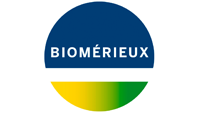Syndromic Testing
BIOFIRE® FILMARRAY® | The Fastest Way to Better Results
The BIOFIRE FILMARRAY System is the new standard for syndromic infectious disease molecular diagnostics. With integrated sample preparation, amplification, detection, and analysis, the BIOFIRE FILMARRAY System delivers accurate results in about one hour—simple, fast, and comprehensive.
The right test, the first time can impact all areas of patient care. Healthcare providers can see faster diagnoses and improved antibiotic stewardship. Labs can see improved efficiency and reduced costs and downstream testing.
The FDA-cleared BioFire System panels test for viruses, bacteria, parasites, yeast, and antimicrobial resistance genes.
BIOFIRE® FILMARRAY® Blood Culture Identification (BCID) Panel | 1 Test. 27 Targets. ~1 Hour.
The BioFire BCID Panel tests for a comprehensive set of 24 gram-positive, gram-negative, and yeast pathogens as well as three antibiotic resistance genes associated with bloodstream infections. You can detect in about an hour the following Candida’s species directly on a positive blood culture sample: Candida albicans, Candida glabrata, Candida krusei, Candida parapsilosis, and Candida tropicalis.
The BioFire BCID Panel rapidly identifies the most common causes of bloodstream infection, reducing time to effective therapy and potentially improving patient survival.3,4
BIOFIRE® FILMARRAY® Meningitis/Encephalitis (ME) Panel | 1 Test. 14 Targets. ~1 Hour.
The BioFire ME Panel tests for a comprehensive set of 14 of the most common bacterial, viral, and fungal (Cryptococcus neoformans/gattii) pathogens associated with central nervous system (CNS) infections in about one hour using only 0.2 mL of cerebrospinal fluid (CSF).
The BioFire ME panel dramatically improves time to diagnostic results.5
The Biofire BCID Panel and the Biofire ME Panel are indicated as an aid in the diagnostics of specific agents of bacteremia and fungemia/meningitis and or encephalitis (respectively) and results should be used in conjunction with other clinical and laboratory findings.
Automated ID/AST Systems - Same Day Accurate Results
VITEK® MS | Microbial Identification in Minutes
The VITEK MS uses Matrix Assisted Laser Desorption Ionization Time-of-Flight (MALDI-TOF) technology to deliver actionable identification results to clinicians to support informed treatment decisions. The VITEK MS V3.2 FDA 510(k) cleared for 401 organisms including mycobacteria, Nocardia, and molds. Candida auris is incuded in this database.
VITEK® 2 | Effcient Workflow and Standardized Testing
VITEK 2 provides same day, automated and standardized ID/AST results. With the VITEK 2 ADVANCED EXPERT SYSTEM™ software, you can focus your time where it is most needed. VITEK ID/AST cards provide reliable and accurate results for clinically important bacteria and yeasts.
- Identify clinically significant yeasts including C. auris with minimum 8.01 software (REF 21243 YST)
- Perform automated and standardized autifungal susceptibility testing (REF 423331 AST-YS09)
Complementary ID/AST Systems - Flexible, Reliable and Well-Established
CHROMID® Easy to read chromogenic media for selective isolation of organisms
CHROMID is an easy to read chromogenic media for accurate and reliable isolation of organisms. CHROMID Candida is used for the selective isolation of yeasts and direct identification of C. albicans. (REF 43631 - 20 plates)
API® | Reliable and Accurate
API is a well-established method for microorganism identification to the species level. API 20C AUX (REF 20210) offers 48 to 72-hour identification of yeasts and API ID 32C (REF 32200) offers 24 to 48-hour identification of yeasts.
ETEST® | MIC Determination: Guide Therapy and Manage Treatment
ETEST consists of a predefined gradient of antibiotic concentrations on a plastic strip and is used to determine the MIC of antimicrobial agents. ETEST is a flexible AST solution that complements the VITEK 2 system. The synergy between VITEK 2 and ETEST supports antimicrobial iniatives and provides quantitative MIC results.
ETEST antifungal references include: 412349 Fluconazole; 412351 Flucytosine; 525858 Itraconazole; 412489 Voriconazole; RUO* agents include: 526348 Amphotericin B; 532040 Anidulafungin; 412268 Caspofungin; 412390 Ketoconazole; 535740 Micafungin
*RUO products are for Research Use Only and are not intended for clinical testing.
REFERENCES
1. Antifungal Resistance. Centers for Disease Control website. https://www.cdc.gov/fungal/antifungal-resistance.html. Updated September 6, 2018. Accessed April 29, 2019
2. Pappas PG, Kauffman CA, Andes DR, et al. Clinical practice guideline for the management of candidiasis: 2016 update by the Infectious Diseases Society of America. Clin Infect Dis. 2016;62(4):e1-e50. DOI: 10.1093/cid/civ933
3. MacVane SH, Nolte FS. Benefits of Adding a Rapid PCR-Based Blood Culture Identification Panel to an Established Antimicrobial Stewardship Program. J Clin Microbiol. 2016;54:2476-2484. DOI: 1128/JMC.00996-16 Epub 2016 Aug. 3
4. Tristan T. Timbrook, Jacob B. Morton, Kevin W. McConeghy, Aisling R. Caffrey, Eleftherios Mylonakis, Kerry L. LaPlante; The Effect of Molecular Rapid Diagnostic Testing on Clinical Outcomes in Bloodstream Infections: A Systematic Review and Meta-analysis, Clinical Infectious Diseases, Volume 64, Issue 1, 1 January 2017, Pages 15–23
5 . Messacar K, et al. Potential clinical impact of the filmarray meningitis encephalitis panel in children with suspected central nervous system infections. Diagn Microbiol Infect Dis. 2016 Sep;86(1):118-20. DOI: 10.1016/j.diagmicrobio.2016.05.020
PRN 054566 Rev 0.1A

